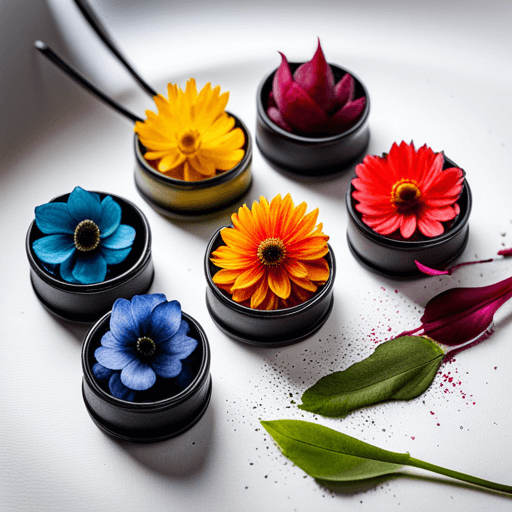Table of Contents
Greetings, Nature Enthusiasts and Creative Souls!
There’s something magical about dipping a pen into a bottle of ink you’ve made yourself, especially when the source of that ink is your own garden. Imagine using the vibrant colors of nature to create beautiful art. Intriguing, isn’t it? So, let’s step into the fascinating world of making natural inks from garden plants, a sustainable, fun-filled, and creative DIY project that’ll make your artistic endeavors truly one-of-a-kind.
Why Make Your Own Natural Ink?
Before we start our green-thumb journey, let’s ponder upon this: Why should we make our own natural ink? Apart from being an exciting DIY project, it’s a step towards sustainability, reducing our dependency on synthetic inks. Plus, it opens up a world of unique, earthy colors that add a touch of personalized charm to your art.
The Art of Making Natural Ink from Garden Plants
Ready to get your hands a little dirty? Let’s dive into the process of creating natural ink from your garden’s bounty.
Step 1: Choosing the Right Plants
The first step is to select the plants. Almost any plant can be used to make ink, but some yield more vibrant colors than others. Berries, such as blackberries and elderberries, are great for purples and blues. Leaves and bark, like that from oak or walnut trees, can produce lovely browns. The world is your oyster, or in this case, your garden!
Step 2: Extracting the Pigment
Once you’ve gathered your plants, it’s time to extract the pigment. This involves boiling the plants in water until the liquid reduces to about half. As the water boils down, it’ll start to take on the color of the plant. That’s your pigment forming!
Step 3: Straining the Pigment
The next step is to strain the pigment. Using a fine-mesh strainer or cheesecloth, separate the liquid pigment from the plant material. What you’re left with is a concentrated liquid that forms the basis of your natural ink.
Step 4: Turning the Pigment into Ink
Now comes the most exciting part – turning your pigment into ink. To do this, you’ll need to add a binder, like gum arabic, which thickens the ink and helps it adhere to paper. Stir in a small amount of gum arabic until you reach the desired consistency. And voila! You’ve made your own natural ink!
Unleashing Your Creativity with Natural Ink
With your homemade natural ink ready, it’s time to let your creativity run wild. Use it for calligraphy, painting, or even as a natural dye. The possibilities are endless!
Conclusion
Making your own natural ink from garden plants is not just a fun DIY project; it’s a rewarding experience that connects you to nature and sparks your creativity. So, why not take a step towards sustainability, embrace the colors of nature, and make your artistic expression even more personal and unique?
Happy Inking!
So, fellow nature enthusiasts and creative souls, it’s time to roll up your sleeves, step into your garden, and create some amazing natural inks. Remember, it’s not about achieving the perfect shade but about enjoying the process and the surprise of seeing what colors nature has in store for you. So, start exploring, experimenting, and most importantly, having fun with it.
